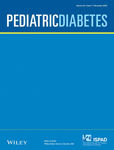Assessment of cognitive function in young children with type 1 diabetes mellitus using electrophysiological tests
Abstract
Background/Objectives
Diabetes mellitus is a chronic disease that affects many body systems, including the nervous and auditory systems. It is noted that there is a scarcity of research on the effect of diabetes on cognitive functions in particular and auditory functions in general in children with type 1 diabetes. Therefore, this study was designed to assess cognitive and auditory functions in children with type 1 diabetes mellitus and to correlate the reflection of diabetes control on cognitive functions.
Methods
This study is a case–control study that included 100 children divided into two groups, the patient group, which includes 50 children with type 1 diabetes, and the control group, which consists of 50 healthy children. Subjects in the current study were submitted to pure tone audiometry, speech recognition threshold test, immittancemetry study, and measurement of cortical auditory evoked and P300 potentials (CAEPs and P300). These audiometric measures were statistically analyzed and correlated with the clinical characteristics of the study group.
Results
The latency of P300 and CAEPs was significantly increased while the amplitude of P300 and CAEPs was significantly decreased in the patient group compared to the control group (p < 0.001). P300 and CAEPs latency has a positive correlation with HbA1c levels (r = 0.460). In addition, there was significant differences between the two groups regarding the hearing threshold at 8000 Hz, and 28% of patients had bilateral sensorineural hearing loss (SNHL) at 8 kHz.
Conclusion
The prolonged P300 and CAEPs latency and decreased amplitude in patients indicate a cognitive decline in individuals with type 1 diabetes compared to healthy individuals. HbA1c levels may increase the risk of cognitive impairment in children. In addition, the risk of bilateral SNHL increased at 8 kHz in children with type 1 diabetes mellitus.
CONFLICT OF INTEREST
The authors declare that there is no competing interest.
Open Research
DATA AVAILABILITY STATEMENT
The data generated during this work are not available to public due to the privacy of the experimental trial. Likewise, they are available by objective request from the correspondence.




